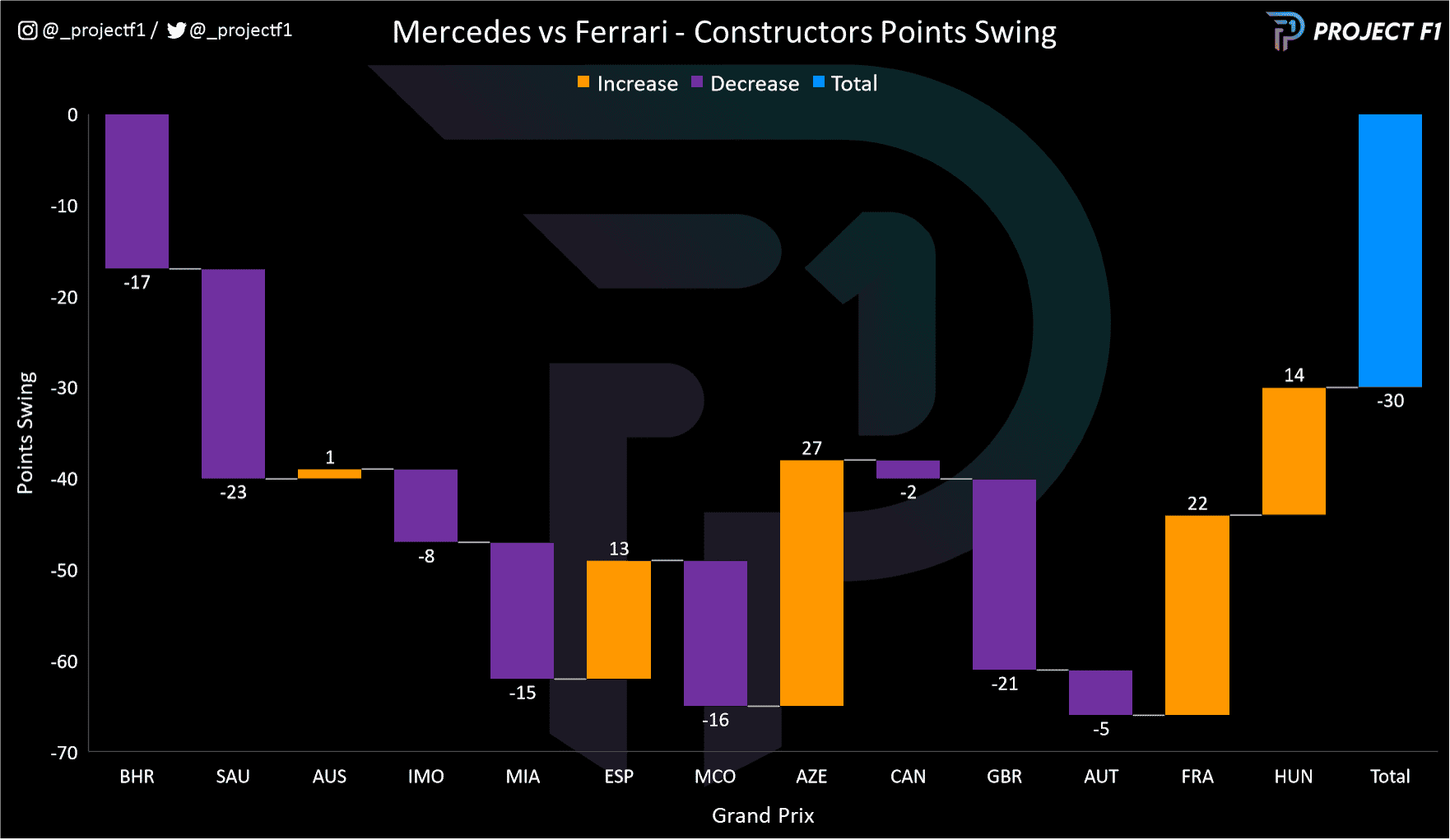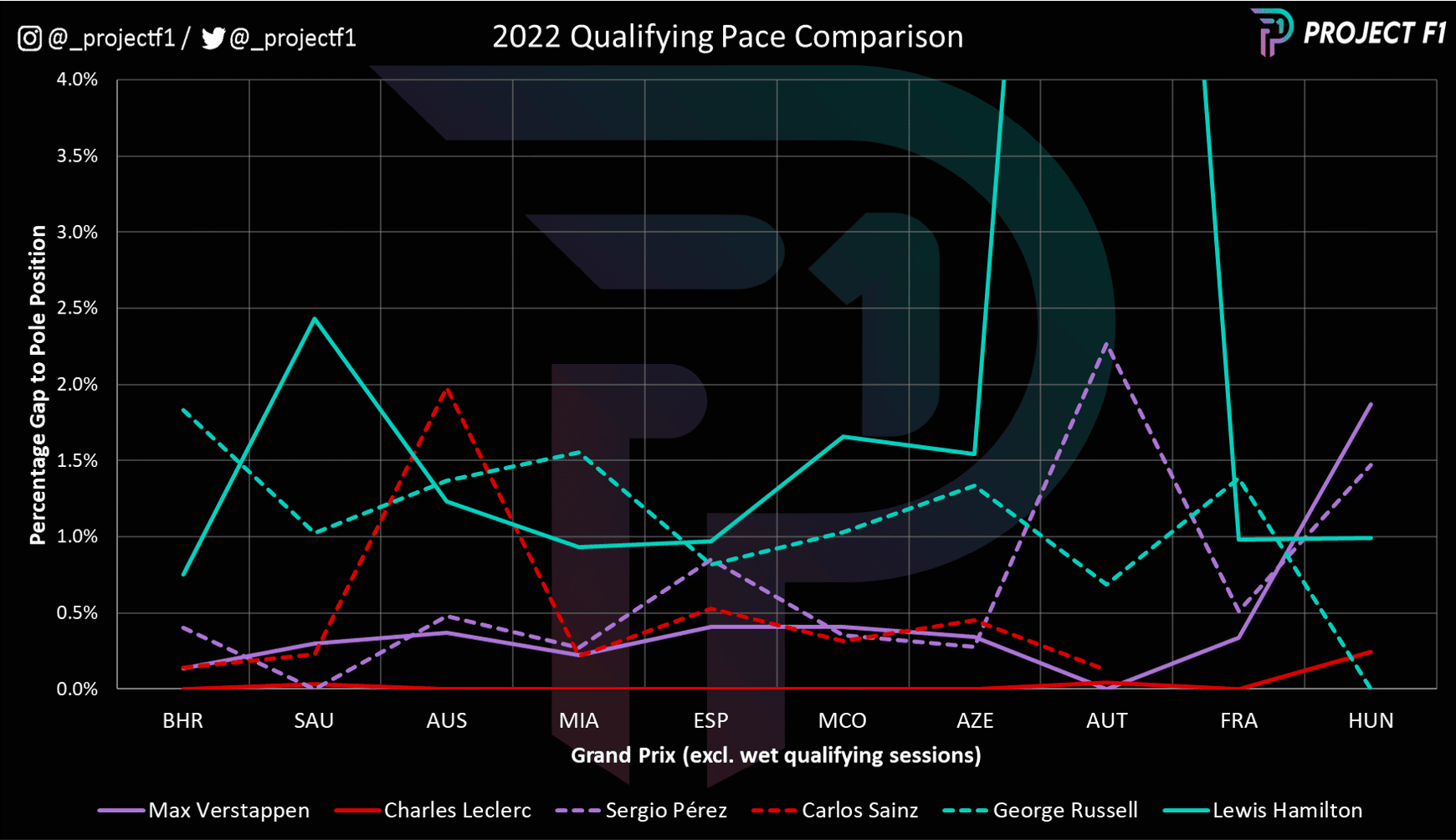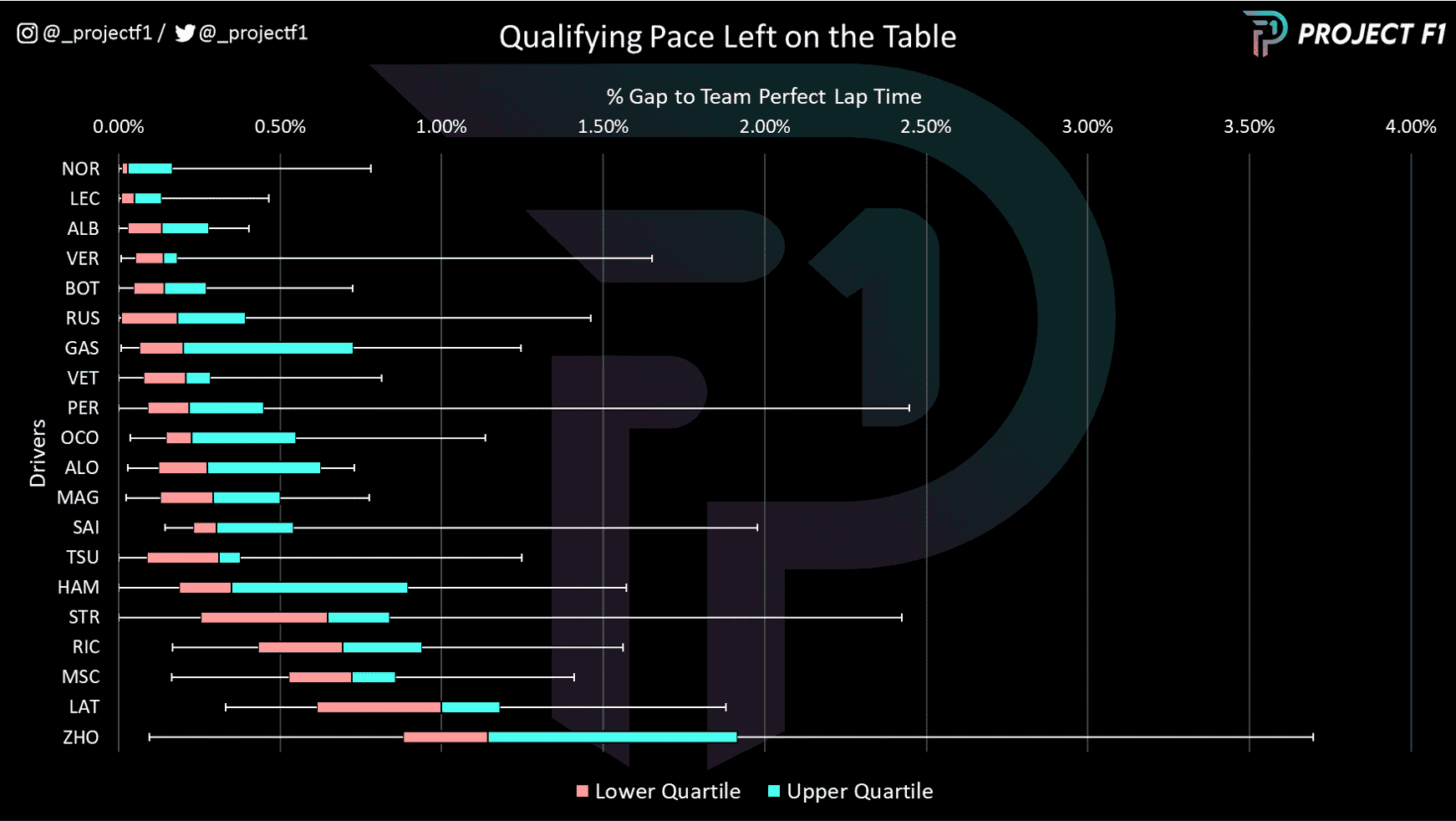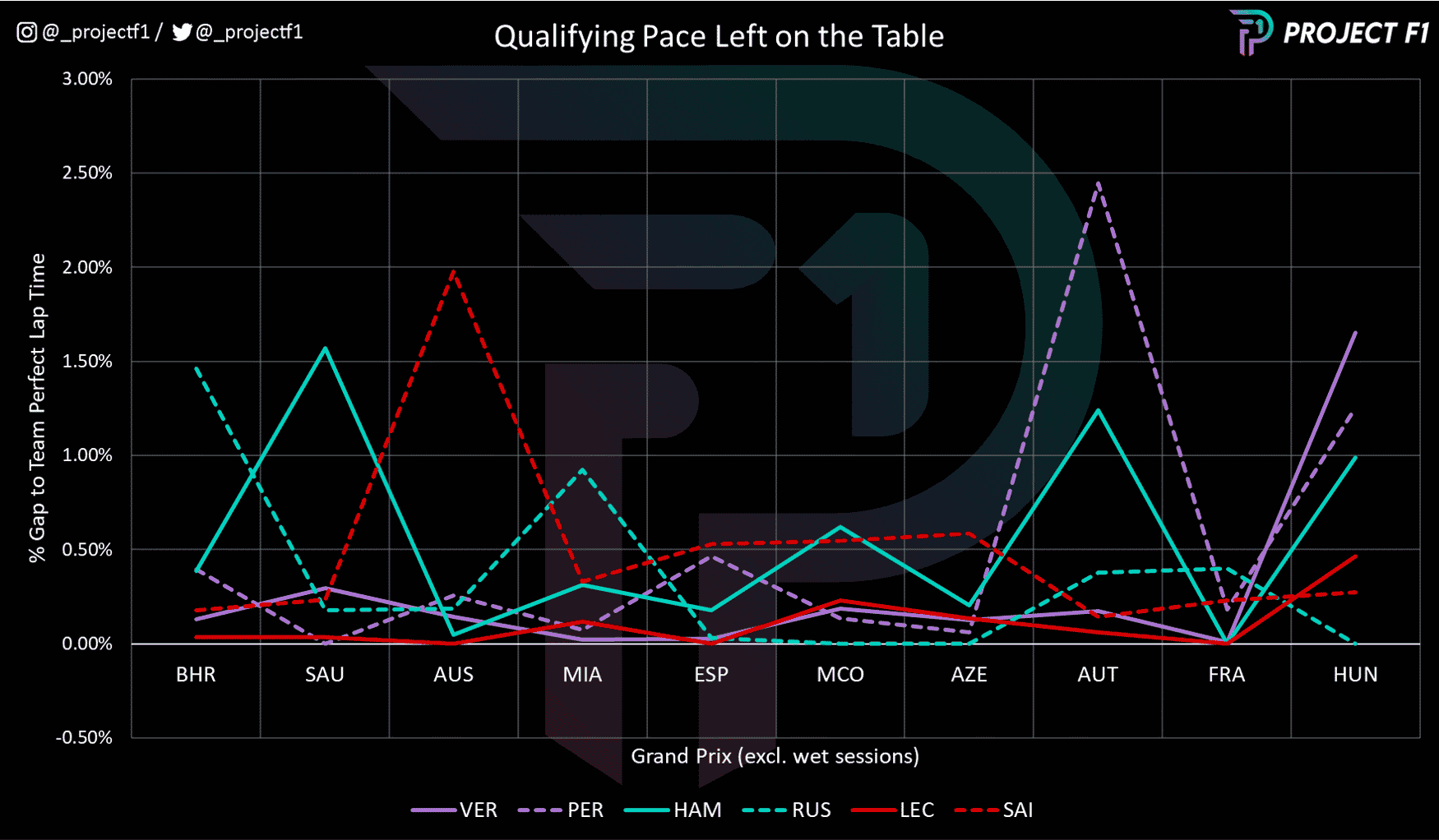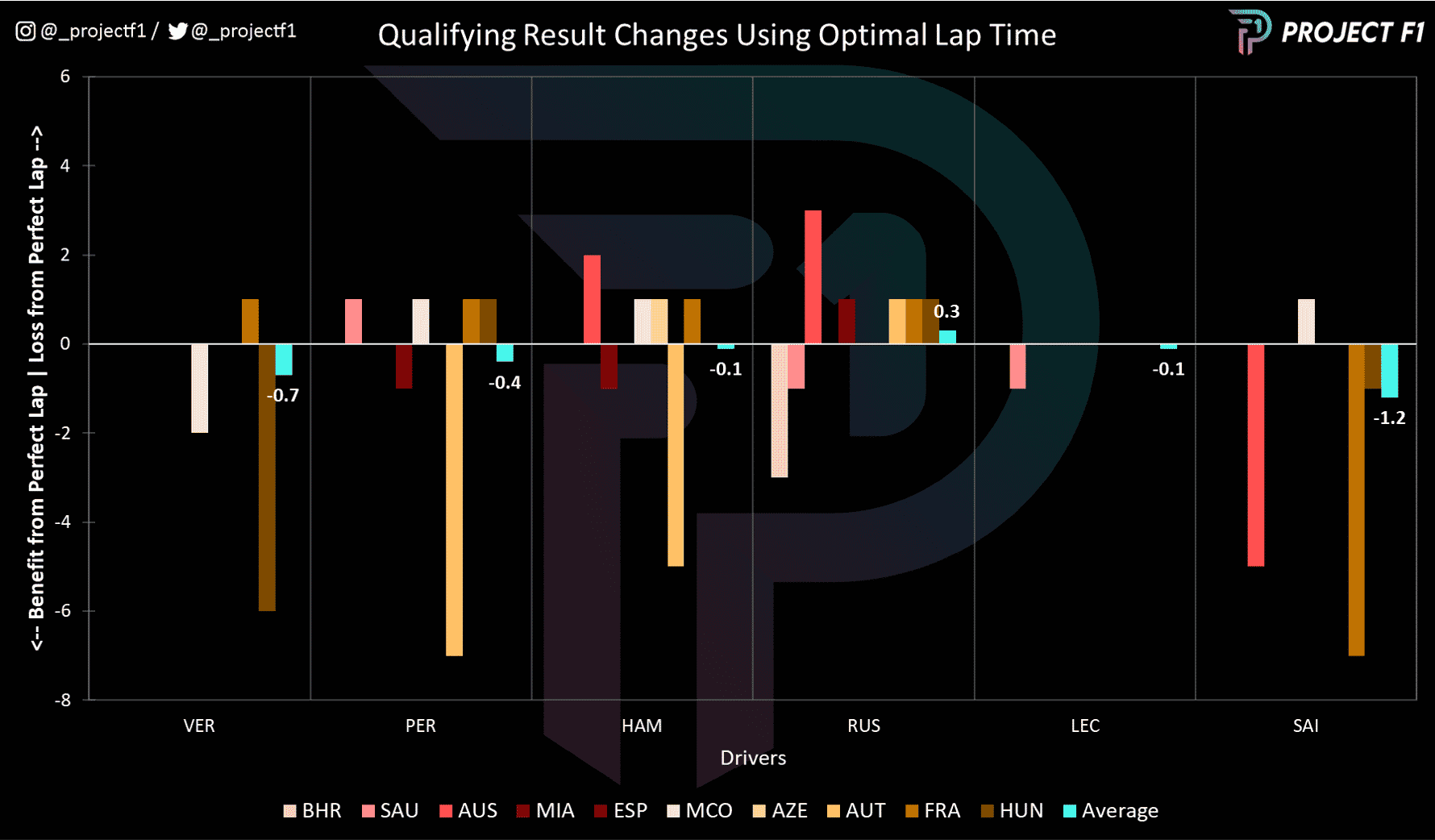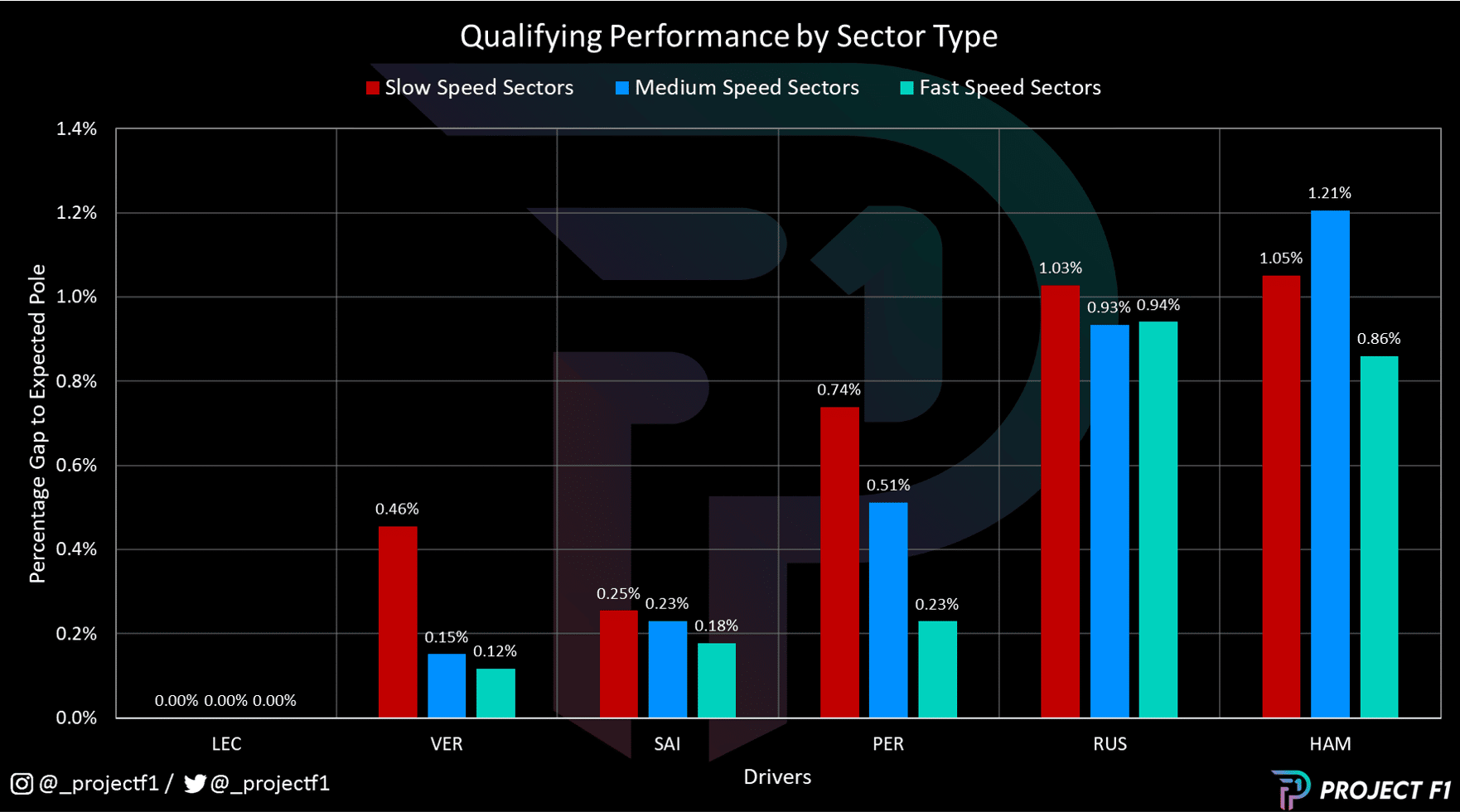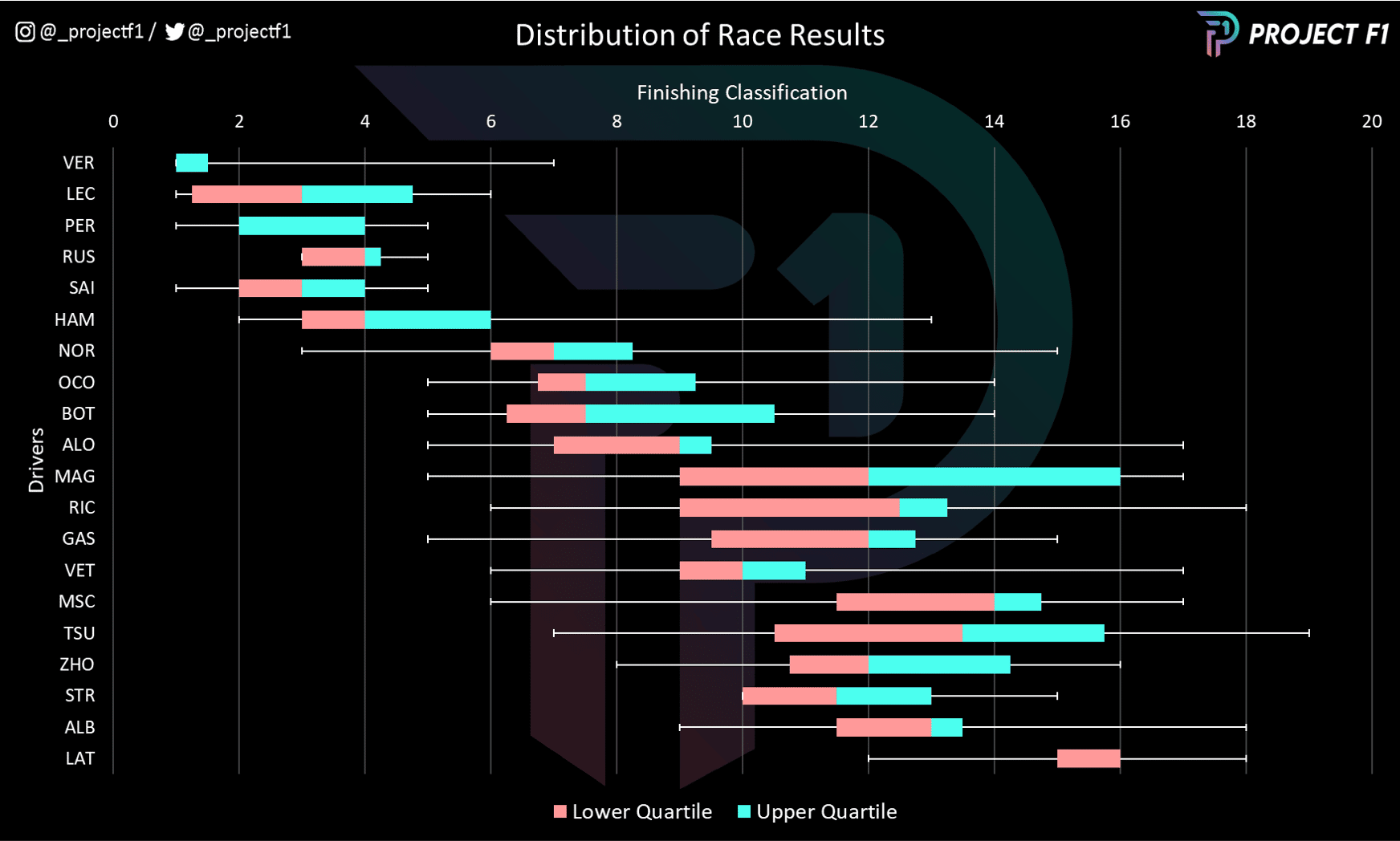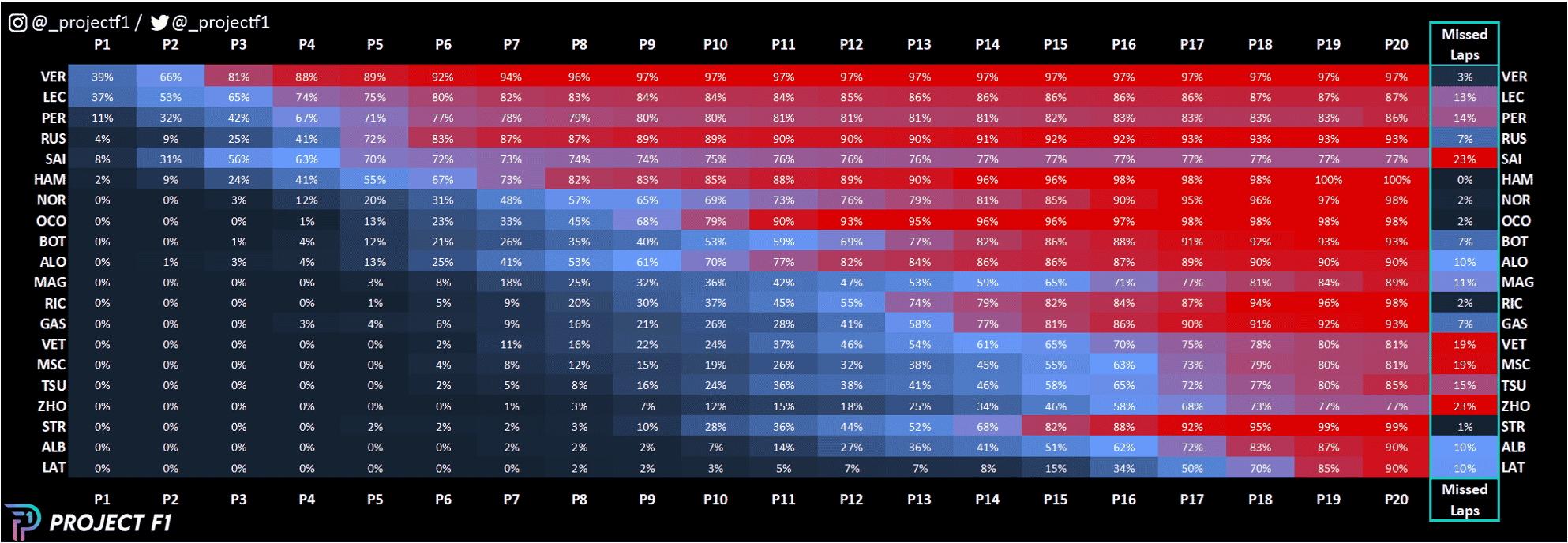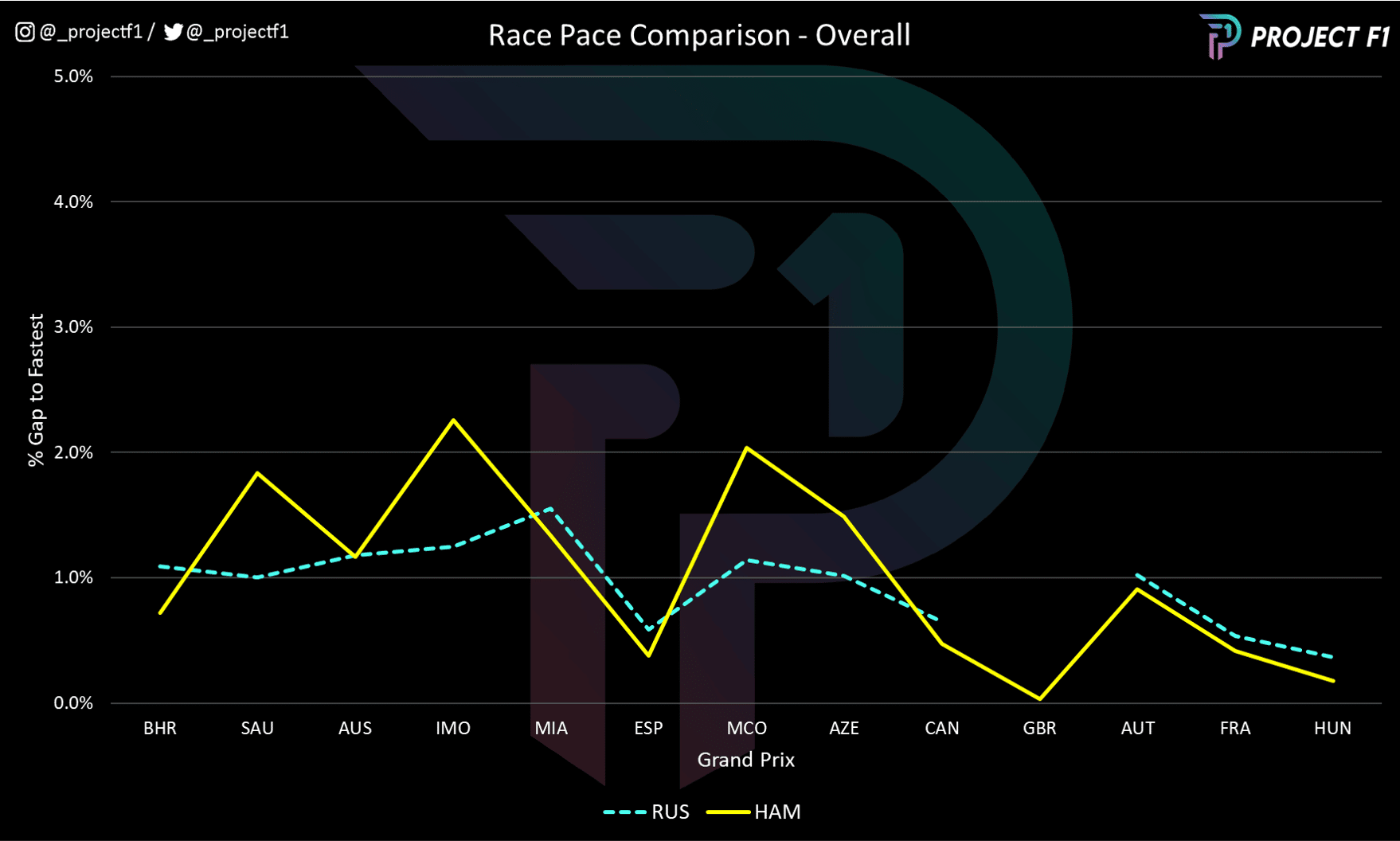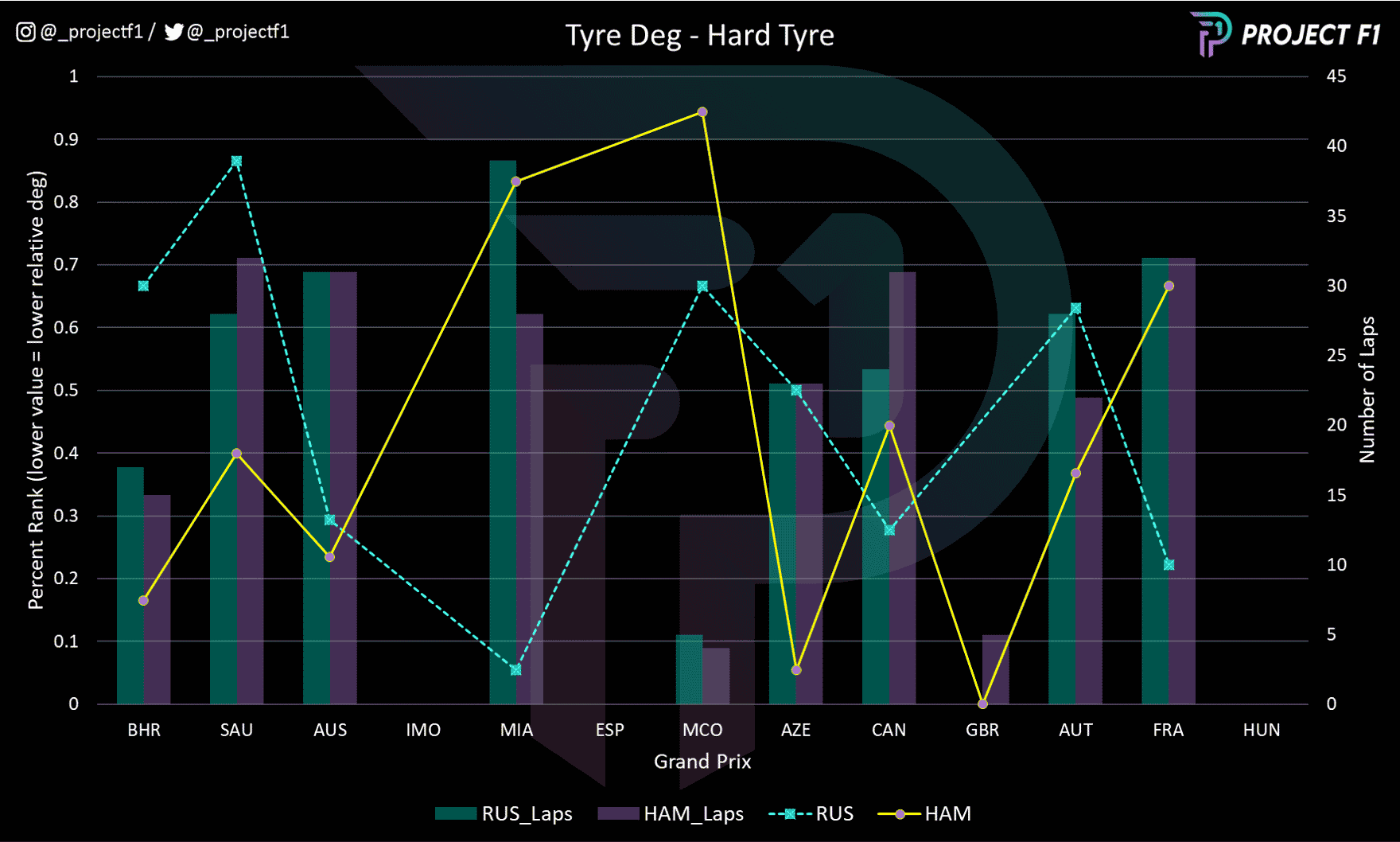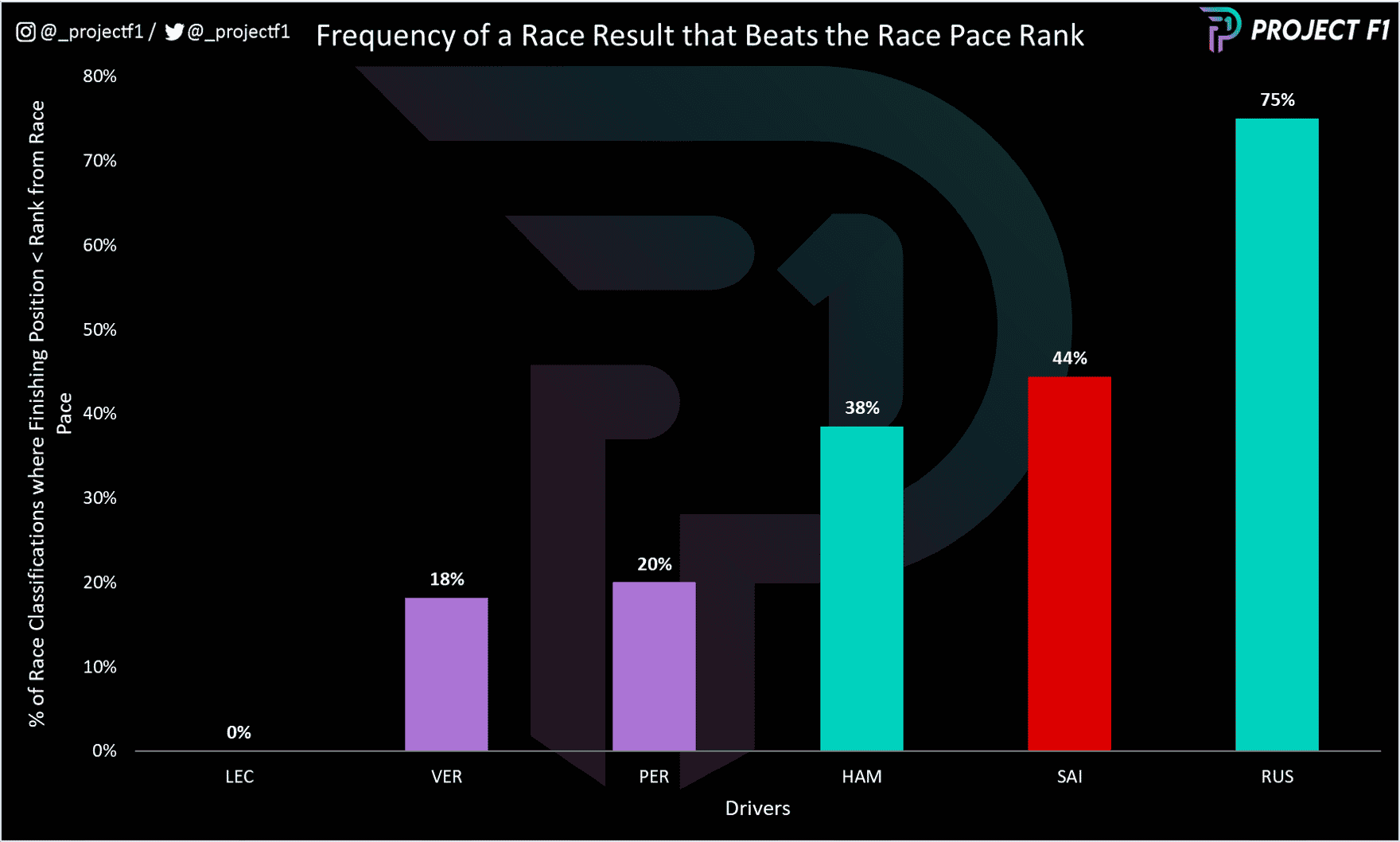Data analysis: who is winning the battle of the F1 team-mates?
Analysing the intra-team battles of F1 2022 so far, with particular focus on the remarkable performance of Mercedes
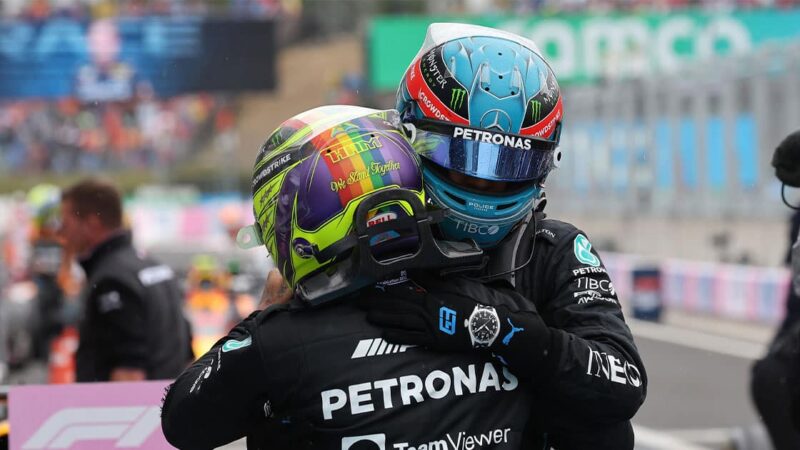
Lewis Hamilton and George Russell have been closely matched and helped Mercedes work with a troublesome car
Mercedes
For all 2022’s focus on Ferrari’s collapse and the unrelenting force of the Max Verstappen-Red Bull axis, one of the other fascinating stories this year has been the intra and inter-team battles between front-running team-mates.
Whilst Charles Leclerc has set an electrifying pace, his Scuderia team-mate Carlos Sainz has largely struggled. Verstappen has ultimately dominated his Sergio Perez, but this was punctuated by an uplift in form which saw the Mexican win in Monaco.
Meanwhile, despite Mercedes’ struggles with a slow and unpredictable car for much of this season, the Brackley outfit is in a remarkable third place in the championship, just 30 points behind Ferrari.
George Russell is fourth, ahead of Sainz who has enjoyed a car which has ofter been the class of the field, with Lewis Hamilton not far behind in sixth.
In the data below, we analyse just where Mercedes has found its speed, see who has the one-lap pace and which driver is in better race-trim shape, as well as looking at whether the Silver Arrows can claim a win in 2022.
Chart 1: Points swing
The fact that Ferrari has arguably had the fastest car on the grid only serves to add to Mercedes’ accomplishment of trailing the team by only 30 points.
Mercedes has often been at least half a second slower compared to the Ferrari across both qualifying and race pace, and yet thanks to bulletproof reliability and a solid driver combination, has been able to pull back the points deficit in a number of key races when Ferrari faltered.
Elsewhere it quietly collected the points, but did so with consistency.
So how has Mercedes fared over the season to get to such an outcome? Let’s start with qualifying.
Chart 2: Qualifying results
It’s no surprise to see Leclerc with such a dominant profile in the qualifying table considering the machinery at his disposal and his proficiency in single-lap pace.
Verstappen has done well but has had few outlier performances – largely due to PU issues, while Perez and Sainz have had their fair share of underwhelming performances.
Russell and Hamilton have both done well considering how they started the season, with the younger driver edging out his team-mate over the first 13 race weekends.
Chart 3: Qualifying Pace
Leclerc has been extremely consistent and fast in qualifying, while Sainz has been steady but generally lacking pace.
Red Bull has lacked in one-lap pace, though Perez has been the one with the greater difficulty.
The Mercedes duo have also had some volatility in their performances but Russell has tended to do better.
The Mercedes has also improved its performance gap relative to the front of the field.
It’s worth noting that Hamilton had some mechanical issues in Austria and Hungary that impacted his results here. Saudi Arabia was not his best session either.
Chart 4: Deficit to peak performance
So, who was getting the maximum performance out of the car? Looking through the data, it appears to be Norris, followed by Leclerc.
Further down the order, it’s Russell that ranks before Hamilton on a median basis.
This is likely due to Hamilton facing more issues on the mechanical front as well as acting as the sacrificial lamb for development parts to help Mercedes out of their performance woes. But this isn’t to take anything away from Russell’s performances.
Chart 5: Deficit to peak pace time series
Looking at the time series above, Sainz’s performances stand out the most – he has seemed unable to regularly match his own peak speed.
In fact of all the drivers, Sainz appears to be furthest from the potential of the car.
Red Bull and Mercedes have operated better, though both have had differing rates of performance volatility.
Chart 6: Position impact from peak performance deficit
This graph shows where drivers could have qualified if they had put their perfect lap together.
It’s essential to note that, as the graph shows, a driver’s theoretically best lap may still be lower than what they actually achieved if they lost out to someone else’s ‘perfect’ lap.
Sainz has failed to deliver more than most drivers – his qualifying position could have been improved by an average of 1.2 positions (or 1 when rounded to the nearest integer).
This largely came down to the red flag incident in Australia as well as the engine penalty in France.
Leclerc was closest to perfection while the others had a mix of outcomes.
Chart 7: Qualifying pace breakdown by sector
So, where are these performance differentials coming from? Looking one level deeper and assessing the sector performances (stratified by their average speeds), and we can see that both Sainz and Perez are lacking in pace across the board when compared to their team-mates.
Verstappen’s deficit to Leclerc lies mostly in the slow speed corners which is unsurprising given the Ferrari’s advantage under braking and traction.
Looking at Mercedes and the main difference between the drivers comes down to the medium and high speed corners, with Russell the better in the former and Hamilton the better in the latter. Interestingly slow speed corners are very similar – different to both Ferrari and Red Bull.
Overall it appears that Russell has the marginal edge in qualifying – though there are some caveats that have affected Hamilton’s performances. How do things compare in race trim?
Chart 8: Race results
Looking at race results, it’s a very different picture between Leclerc and Verstappen – with the later besting the former with considerable margin.
This is all down to Ferrari’s woes across reliability and strategy that have left Leclerc with dire outcomes despite electrifying pace in qualifying.
Perez and Sainz are there or thereabouts in race results relative to their qualifying positions.
Russell and Hamilton are much closer in race results – they share the same median outcome but Hamilton has a worse overall lower finishing position.
Chart 9: Laps in position
The chart above clearly highlights the DNF woes of both Ferraris, particularly Sainz, as well as for Perez. Note that Red Bull still got plenty of laps in Bahrain only to have a power loss take both cars out in the final stages of the race.
It’s worth noting that Russell spends more time in the top 5 than Hamilton. But despite this, Hamilton has still delivered solid race result outcomes.
This shows his good race pace and ability to recover from poorer qualifying positions – though not in every case.
Hamilton also has one of the best missed laps statistics with Russell not far behind (though the GB GP DNF was not helpful).
Chart 10: Race Pace
Overall, the Mercedes drivers’ race pace has been broadly similar, though Russell had the advantage for the start of the season. Things changed in Canada, with Hamilton significantly closing the gap – no doubt helped by Mercedes’ advances in car development and stepping away from experimental floors.
Hamilton was fastest in at Silverstone, but this may have been track specific. However, the Mercedes has shown a considerable improvement in pace relative to the pace of the fastest on track at any given race.
Chart 11: Tyre degradation profiles
Looking at tyre degradation profiles, there have been significant fluctuations in performance on the hard tyre (when measured relative to the rest of the field).
This is partly down to differences in race strategy for the two drivers as well as considering the race situation and whether they were fighting at the front of the field or the rear of the field.
Things are a bit more representative on the medium tyre. There was heightened volatility until Canada after which things settled for both drivers. The performance gap between the two drivers is much narrower as the season has gone on, though the degradation has been a larger problem in the last few races.
Hamilton has been better on the soft tyre but there are few data points, most of which are also highly strategy dependent.
Chart 12: Benefit from strategy/retirements
Last but not least, we look at non-race pace related effects from strategy and retirements. The above chart shows the proportion of races where a driver has been classified in a position that is better than the rank implied by their overall race pace.
Looking at this, Russell is the standout having finished 75% of races ahead of what his race pace implied. This comes down to a combination of benefitting from other drivers in front suffering from mechanical retirements as well as the timing of safety cars and/or strategy decisions (either good ones from Mercedes or bad ones from others).
It’s worth noting that those who tend to be at the front or rear of the field will have biased numbers, but this still works to give an indication – especially for more of the middle of the field.
Perhaps on this measure Russell has been more fortunate, though one could also argue he’s placed himself in the position to capitalise on the opportunities. This metric is also a good reflection on Mercedes’ advantage when it comes to reliability.
Interesting to see that Sainz is also one that benefits from this hugely, though this is likely down to getting better strategy and/or not Leclerc or Verstappen having issues.
Therefore, analysis in race trim would suggest that the two Mercedes drivers are on more even footing, with Hamilton potentially edging out his teammate – especially based on recent performances and momentum. Russell has received more of ‘the right place, right time’ benefits. Be that as it may, Mercedes is making healthy strides in performance toward the front of the field.
Project F1 turns data into graphics that uncover race pace and strategy
See more analysis at @_ProjectF1 on Twitter or @_ProjectF1 on Instagram
